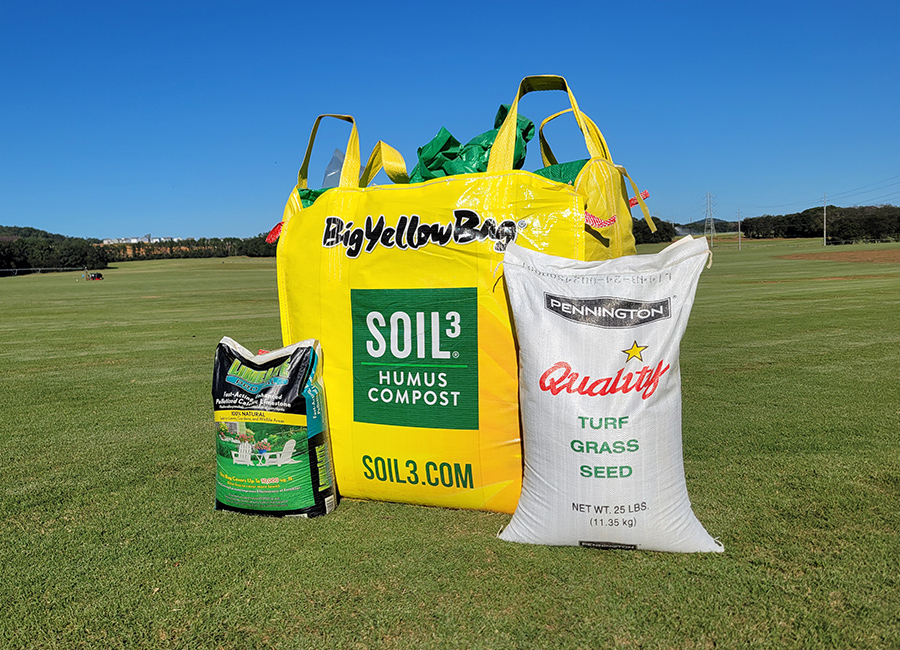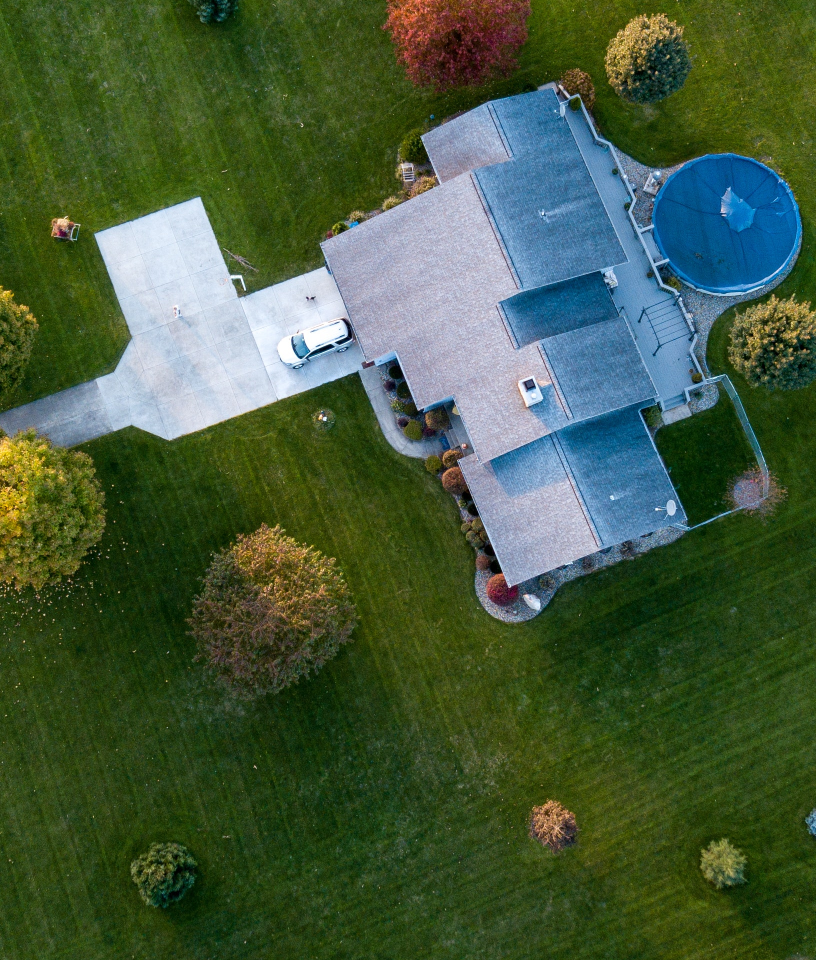

🍁 Rake or blow fall leaves off your Tall Fescue lawn so they don't smother it - at the rate they're coming down, you may need to be out there every few days. Use those leaves as mulch in your beds or to make compost.
🔪 Lower your mower! It's time to lower your mowing cut height to 2.5-3" for the duration of the cool months ahead.
🌱 November is still a good month to plant Tall Fescue seed. To promote the ritual fall overseeding, we have several overseeding package deals for different sized lawns.
Dig into why we recommend Soil³ compost for Tall Fescue sod and seed by reading these short articles:
- Seeding a Tall Fescue Lawn with Soil³ Compost
- Laying New Sod with Soil³ Compost
- Topdressing Lawns with Soil³ Compost
Fall Armyworms
Threat Downgraded Due to Frosts in Some Areas
Except in coastal and urban areas in zone 8 and warmer, many rural areas in zone 7 and cooler received a couple of frosts, so Fall Armyworms are less of an issue. If you're in a warmer, frost-free area, continue to watch for signs and symptoms. If you flush them out with a soap test, you can order lawn insecticide from us.
Order 5-10-30 with Acelepryn for pick up or delivery, or check out our Champ Lawn Coach subscription, where we'll send it to you every year.
Fertilizing Tips
- Now that it's cooler out, it's safe to fertilize Tall Fescue with more nitrogen, such as our 16-4-8 or 18-24-12. The fertilizer formulation we sell in our overseeding packages is the 18-24-12 blend.
- "Winterizer" fertilizers (example ratio: 32-0-10) are not the best solution for lawns, even Tall Fescue. Learn how they might actually damage them in our article, "Does Your Lawn Need Winterizer Weed & Feed, or Not?"
- Review the fertilizing schedule in our Tall Fescue Maintenance Guide.
- Sign up for Lawn Coach and we'll automatically mail you all the right fertilizers when you need them.
- Apply fast-acting lime if you need to neutralize the pH of your soil. Always take a soil test to confirm if you need to apply lime or fertilizer. Balanced soil pH is critical for your grass to be able to use the nutrients supplied by your fertilizer.
💦 Watering Tips
- It's been very dry in many areas of the South. If that's true for you and your garden, remember that new Tall Fescue seeds and sod need extra water. Keep your sprinkler handy and turn it on to keep new seeds moist until they germinate and new sod moist until roots form.
- After your new sod or newly overseeded lawn is rooted in, you'll be able to back off watering to 1" per week during the cool months.
🚰 A word about sprinklers/spigots and freezing temperatures: Depending on your type of sprinkler and the degree of frost, you may need to drain and unhook it so it doesn't burst. A hard freeze that lasts for hours under 28 degrees can damage spigots, hoses, hose-end sprinklers, and hand sprayers. Avoid having to fix or replace them by reading our irrigation winterizing tips How to Winterize Your Irrigation.
Weeding Tips
- Right now, the best method to combat weeds is to mow them before they go to seed. Mowing is an effective way to suppress weeds because it cuts off flower/seed heads, which stops weeds from producing more weeds, thus breaking the life cycle. If you have bad weeds, mow regularly so they don't produce seeds.
- The window for applying pre-emergent herbicide is closed for the autumn. The next window will open in February when the Forsythia bushes flower - we'll send out an email alert at that time. Now is the time for post-emergent herbicides for weeds you can see now on all established lawns.
👍 Rule of Thumb: Don't plant seed or new sod if you applied a pre-emergent this fall. How come? The pre-emergent will also inhibit your Tall Fescue seeds from germinating. - For weeds you see now in established lawns, apply post-emergent liquid herbicides directly to the weeds. (As always, read the herbicide label to make sure it's safe for your type of lawn and targets your particular weeds, then carefully follow the application instructions.)
👍 Rule of Thumb: It's okay to apply a post-emergent liquid herbicide after you've mowed your new lawn 3 to 4 times. - Pulling by Hand: If some weeds have escaped your pre-emergent routine and regular mowing, we recommend hand pulling to build up arm strength for cooking that big Thanksgiving meal.
- Mulch suppresses weed seeds in flower beds. Spread your favorite mulch 2-4" thick and keep it 1-2" away from touching the trunks or stems of your plants.
- Have you ever planted a Tall Fescue lawn from seed and stumbled upon an uninvited guest that looks like Tall Fescue, but somehow seems out of place? If so, you might be looking at Poa trivialis weeds, aka rough bluegrass. Learn how to prevent this weed by reading Weed of the Month: Rough Bluegrass.
Roughstalk bluegrass grows faster than the surrounding Tall Fescue lawn, so it stands out not only because of the lighter green color but also its taller height.
Mowing Tips
- We mentioned it earlier, but in case you missed it, it's time to lower the blade when mowing your established Tall Fescue lawn. Continue to mow throughout the cool months at a 2.5-3" cut height. Next summer we'll remind you to raise it up again.
-
Mowing Frequency: We recommend mowing every 5 to 7 days when Tall Fescue is actively growing during the cool months.
- Mowing New Lawns from Sod & Seed: Did you lay new Tall Fescue sod or plant seed? Our saying is to "mow as soon as there is something to mow." In fact, mowing will promote growth! So don't be timid. Mow it! Read: How Soon Should I Cut My Grass?
Come back next month for December's Lawn Tips for Tall Fescue lawns!
Got questions? Leave a comment below.
For tips on what to do for Warm Season lawns such as Bermuda, Centipede, Zoysia, take a gander at this page: November Warm Season Lawn Tips.
If you're new here, subscribe to our emails to get this information in your inbox every month.








